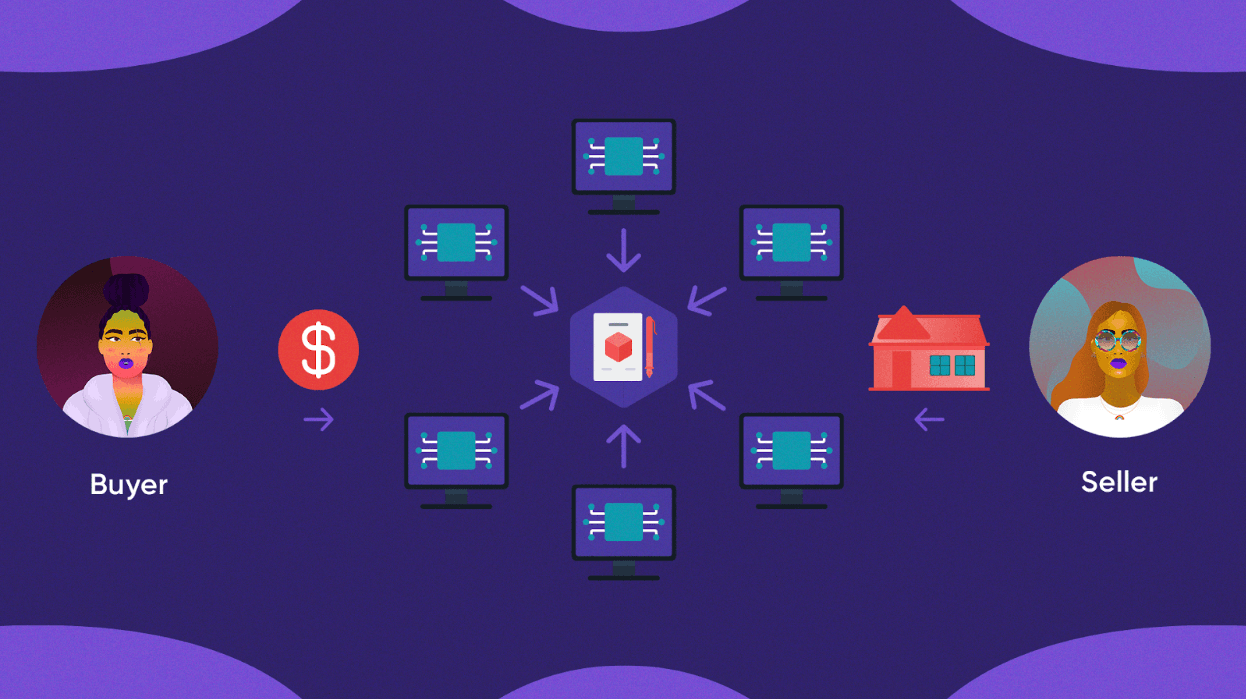How the Blockchain Works
With blockchain technology, you have complete ownership and control over your data because it is distributed across thousands of computers rather than a single entity.
Blockchains work through something called a ‘node’, which is basically a device (like a laptop or server) that checks to see if transactions are real and valid.
These nodes connect to form a network without any central authority through a P2P (Peer-to-Peer) system.

To understand how this works, let's use an example to help you visualize this. If Alice wants to send Bob $10, she can do so through her bank, and the money will pass through her bank before reaching Bob’s account.
But if Alice chooses to use the blockchain, the process is different. Her money will move through the network of nodes instead of a centralized bank. This means that no one person or organization can control her money or prevent her from transferring it.
Each node acts independently and stores a copy of every transaction made. But you may wonder, how do we prevent others from editing or altering past transactions?
This is where consensus mechanisms come to play. Each blockchain has a unique system that ensures that past transactions cannot be changed and new transactions are legitimate. We’ll talk more about this in a later lesson.
Now, back to nodes from a security perspective.
If one node is compromised or hacked, it will not affect the other nodes in the network. Unlike centralized systems used by most companies, each node can flag any unsolicited activity attempting to tamper with the original transaction. The blockchain’s transparency allows for public verification by any actor in the system.

